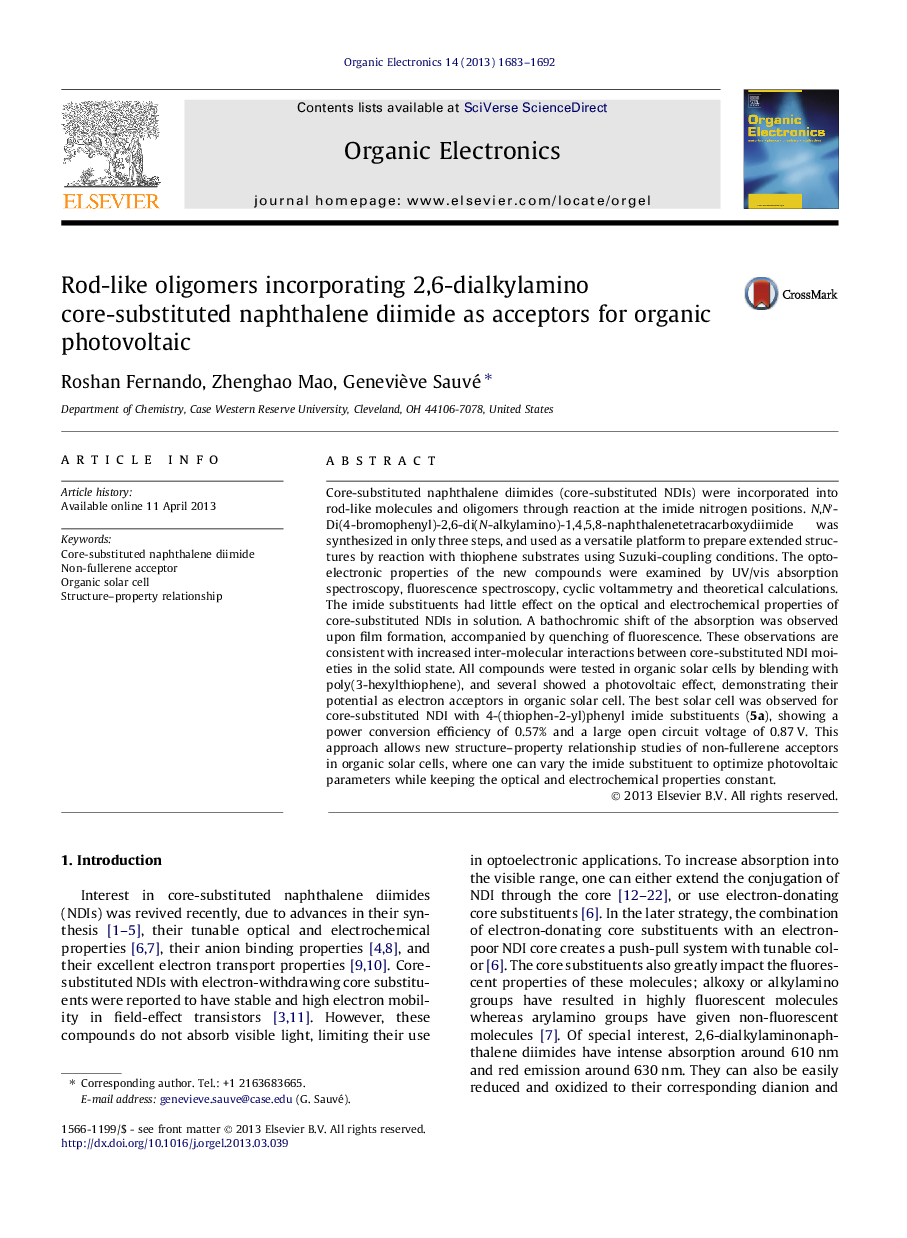| Article ID | Journal | Published Year | Pages | File Type |
|---|---|---|---|---|
| 1264534 | Organic Electronics | 2013 | 10 Pages |
•Compounds based on core-substituted naphthalene diimides (cNDIs) were synthesized.•Similar opto-electronic properties were observed despite core/imide substitutions.•Molecules with n = 1 behaved as acceptor when blended with poly(3-hexylthiophene).•Photovoltaic properties were enhanced when thiophene units were present in molecules.•This is a novel approach for structure–property studies of non-fullerene acceptors.
Core-substituted naphthalene diimides (core-substituted NDIs) were incorporated into rod-like molecules and oligomers through reaction at the imide nitrogen positions. N,N′-Di(4-bromophenyl)-2,6-di(N-alkylamino)-1,4,5,8-naphthalenetetracarboxydiimide was synthesized in only three steps, and used as a versatile platform to prepare extended structures by reaction with thiophene substrates using Suzuki-coupling conditions. The optoelectronic properties of the new compounds were examined by UV/vis absorption spectroscopy, fluorescence spectroscopy, cyclic voltammetry and theoretical calculations. The imide substituents had little effect on the optical and electrochemical properties of core-substituted NDIs in solution. A bathochromic shift of the absorption was observed upon film formation, accompanied by quenching of fluorescence. These observations are consistent with increased inter-molecular interactions between core-substituted NDI moieties in the solid state. All compounds were tested in organic solar cells by blending with poly(3-hexylthiophene), and several showed a photovoltaic effect, demonstrating their potential as electron acceptors in organic solar cell. The best solar cell was observed for core-substituted NDI with 4-(thiophen-2-yl)phenyl imide substituents (5a), showing a power conversion efficiency of 0.57% and a large open circuit voltage of 0.87 V. This approach allows new structure–property relationship studies of non-fullerene acceptors in organic solar cells, where one can vary the imide substituent to optimize photovoltaic parameters while keeping the optical and electrochemical properties constant.
Graphical abstractFigure optionsDownload full-size imageDownload as PowerPoint slide
